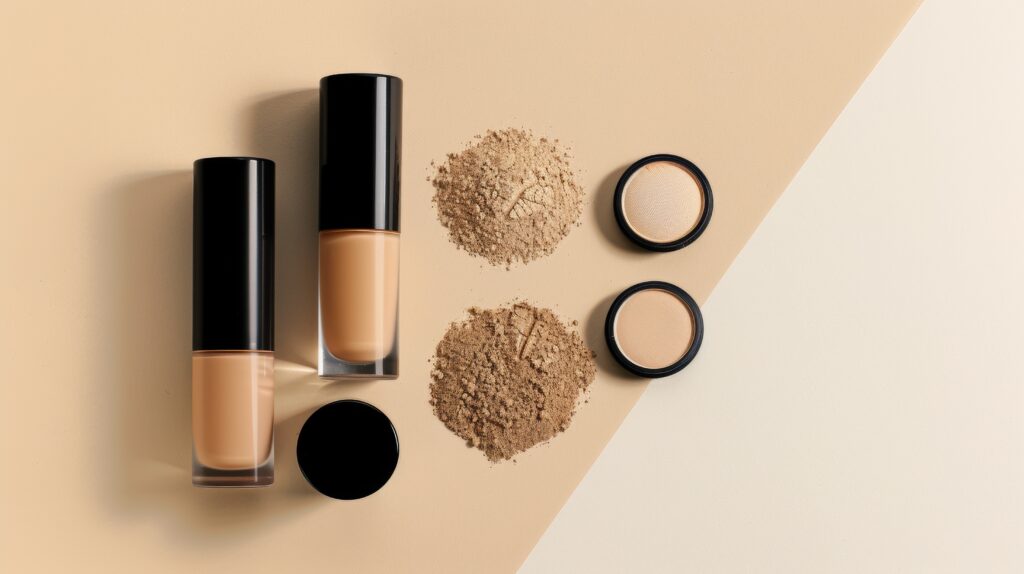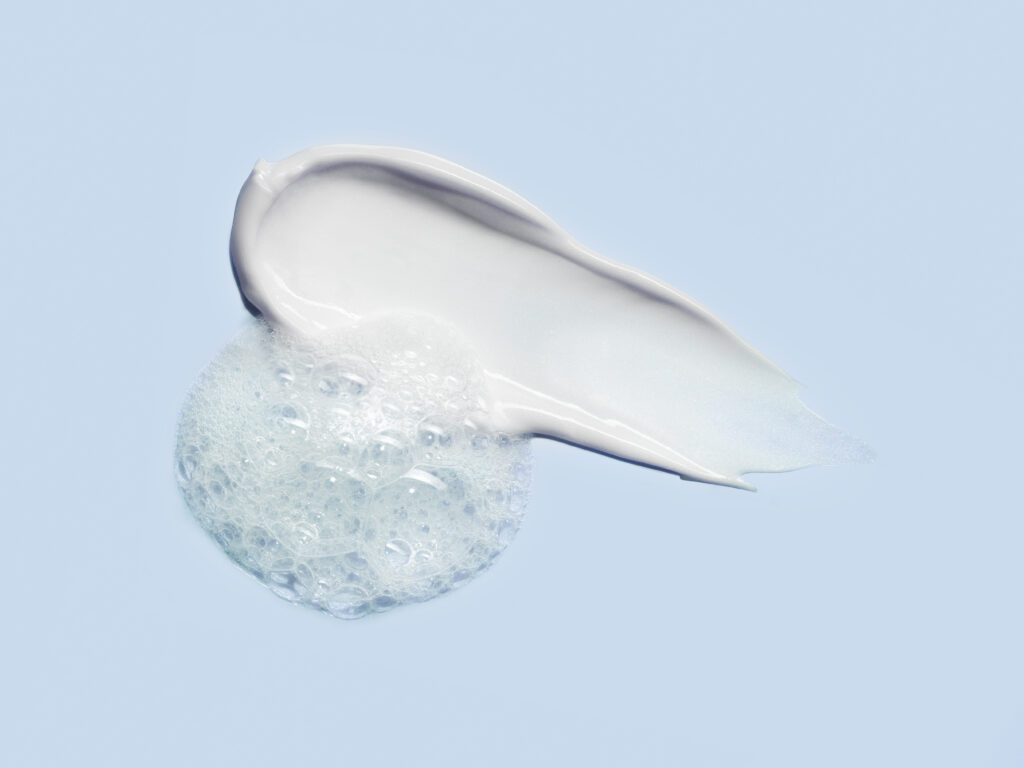Claimable Glow: The Biological Route to “Skin Tone Beautifier”
Cosmetic formulators increasingly hear about “glow,” “radiance,” and “highlight”—but most solutions rely on optical tricks (pearls, mica, pigments, glitter, surface scattering). What if there were a biological route to radiance—one that restores skin’s own ability to reflect internally through detoxification of cellular debris and restoration of degradative systems like the proteasome? The difference is more than marketing: it can shift formulations from masking defects toward repairing them, delivering more durable, natural-looking glow.
Dullness, uneven tone, sallowness, and spots are not just surface issues; they tie into accumulation of oxidized lipids, denatured proteins, and lipofuscin within epidermal cells. These intracellular “waste products” attenuate light passing through skin (or reflecting internally), increasing absorption or scattering in undesirable wavelengths (e.g., yellow or gray tones), reducing brightness. For formulators, this raises technical challenges: how to reduce or clear these accumulation products; how to stimulate or maintain proteasome or autophagy systems; how to measure changes in “internal reflectance,” colour saturation, and tone; and how to position claims credibly.
The Formulator’s Roadblocks: Proteasome Decline, Oxidized Load, and Measurement Gaps
Formulators face multiple interconnected problems when trying to create skin care that improves radiance biologically rather than superficially.
Firstly, many skin care regimens focus on antioxidants and exfoliants to reduce oxidative stress or remove dead surface cells. These help, but they often don’t get at deeper cellular debris (e.g. oxidized proteins, lipofuscin) that interfere with internal light scattering and color saturation. The proteasome system—a key cleanup machinery that degrades misfolded or damaged proteins—is known to decline with age or under environmental stress. When the proteasome’s efficiency drops, intracellular aggregates accumulate, degrading skin brightness from within.
Secondly, measuring what formulators need to measure is nontrivial. Visual appearance is subjective. Claims like “radiance boost,” “glow,” or “anti-dullness” are commonly used, but regulatory and formulation teams need objective endpoints: brightness (often measured by L* in colorimetric systems), chroma or saturation (C* or Cab*), internal reflectance, reduction in yellowness (b*), reduction in spots/dark patches, and so on. Many optical “tricks” give immediate visible payoff (e.g. mica) but fade, shift in color, or drift under varying lighting and skin tones. These superficial effects may not improve the underlying skin health, and can even mask or shift colour in unflattering ways under different light.
Thirdly, consumers and regulatory bodies are more savvy: they demand “cleaner” ingredient decks, more natural or “skin-friendly” alternatives, and substantiation. The risk is that formulators lean too heavily on optical agents that may irritate, clog, or misbehave with skin movement or oil production. Also, tolerability, stability (optical inclusions like mica may impact rheology or emulsion stability), and cost pressures push for more efficient, lower dose, performance-oriented actives.
Megassane®: Internal Housekeeping for Visible Payoff
Enter Megassane®, a lipidic extract of Phaeodactylum tricornutum microalgae rich in EPA that up-regulates proteasome activity via epigenetic and genetic pathways—reducing oxidized proteins and restoring visible tone. Rather than relying on inert reflectors, Megassane® works by enhancing cellular housekeeping—promoting proteasome activity (and possibly autophagy) to clear intracellular aggregates like denatured proteins and lipofuscin, helping restore internal reflectance.
At low use levels (e.g. 0.1-0.3%) in lipid or oil-compatible phases, Megassane® can be formulated into a variety of systems (serums, creams, treatments) and is compatible with SPF/daily care regimes. Because its mechanism is internal, the visual improvement in brightness, reduction in yellowness, smoother skin colour transitions, and reduction of dark spots occur over weeks rather than just immediately post-application.
Moreover, doing radiance via detox has fewer trade-offs: less dependency on pigments that might shift under different lighting, lower risk of irritation or texture issues from optical particles, less risk of after-shine, less disruption of skin texture by harsh exfoliants. Claims such as “skin tone beautifier,” “anti-dullness,” “colour saturation booster,” “brightness improvement,” “spot reduction” can be more credibly supported by clinical or ex vivo data rather than appearance alone.
Design Controls: Proteasome Assays, Reflectance, and CIE Metrics
Megassane® was built to clear the “backlog” that makes skin look flat and grey. In cell tests, low concentrations helped the skin’s own cleanup machinery (the proteasome) work more efficiently and reduced oxidized protein by double-digit percentages. In human skin explants exposed to UV, two useful patterns showed up: preventive use helped protect that cleanup activity during exposure, and post-exposure use helped bring it back afterward. In short, it supports both protection and recovery.
The clinical story matches the lab work. At 0.3% in a standard emulsion, Megassane® improved skin colour saturation (Cab) over 56 days in a smoker panel chosen for pronounced dullness. The result was a clearer, more “naturally lit” look—especially on cheekbones and temples—without adding optical particles. That’s the practical payoff of reducing internal waste: skin reflects light better on its own.
Measurement follows established best practice, so R&D and Regulatory can stay aligned. You can track brightness (L*), yellowness (b*), and colour saturation (Cab) with instrumented colorimetry, and, if needed, confirm changes in reflectance with non-invasive spectroscopy. Recent journal studies use the same tools to show that supporting the proteasome reduces lipofuscin/oxidized build-up and leads to higher L*, lower b*, and cleaner tone. That gives you a direct bridge from mechanism to visible outcomes.
For formulation, the integration is straightforward: Megassane® is oil-phase friendly, works at low dose, and fits into daily care or SPF-adjacent routines without the texture compromises of pigment-based “glow.” The combination—biological mechanism, clinical visibility, and standard color metrics—lets you claim “anti-dullness,” “skin tone beautifier,” or “colour saturation booster” with numbers behind the words, not just optics.
Inclusive, Claimable Radiance with a Lean INCI
The cosmetic industry often emphasizes instant gratification (visible glow), so optical agents will remain part of many formulas. But the trend is strongly toward substantive skin health, cleaner labels, claims based on mechanism, longer-term appearance enhancement. Consumers demand not just that skin looks glowing, but that it is healthier inside, less dull, even, and behaves well under varied lighting conditions.
Formulators who adopt detox approaches (proteasome, autophagy, removal of lipofuscin etc.) gain differentiation. Instead of competing on shimmering surfaces, they compete on color saturation, tone uniformity, durability of radiance, fewer color shifts. Regulatory and marketing claims will favor actives with measurable internal effects — “restores,” “improves internal reflectance,” “reduces oxidized protein load” — over vague “glow” or “highlight.”
Also, for inclusivity: different skin types reflect and absorb light differently; optical agents that rely on superficial reflection may look great on some skin tones, poor on others. Detox-based radiance works across skin types by improving what lies beneath the surface, moderating chromophore behavior, reducing yellowness or browning, improving color saturation more uniformly.
Build Radiance by Clearing the Backlog, Not Adding Glitter
Dullness and lack of radiance are not problems that can always be solved by powders, mica, or pearlescent particles. They often stem from internal accumulation of protein damage, oxidized lipids, lipofuscin, and reduced efficiency of degradative systems like proteasomes. Megassane® presents a compelling solution: by promoting the skin’s own clearing systems, it improves internal reflectance, brightness, colour saturation, and reduces off-tones—without relying on optical fillers.
For formulators seeking competitive advantage, integrating Megassane® into your formulation toolkit offers measurable, durable radiance, cleaner claim potential, and appeal across skin types. To move forward: try incorporating Megassane® at its effective dose in your next formula, conduct in-vitro / ex-vivo proof of mechanism and follow with a short human panel to validate brightness (L*), saturation, spot reduction, etc. Build your claims on data, not just surface sparkle.
If you would like data sheets, sample sets, or in-vitro trial protocols for Megassane®, contact Deveraux Specialties. Let us partner with you to formulate radiance from detox—not glitter.
Resources
- Sakamoto, K., Fujimoto, R., Nakagawa, S., Kamiyama, E., Kanai, K., Kawai, Y., Kojima, H., Hirasawa, A., Wakamatsu, K., & Masutani, T. (2023). Juniper berry extract containing Anthricin and Yatein suppresses lipofuscin accumulation in human epidermal keratinocytes through proteasome activation, increases brightness and decreases spots in human skin. International Journal of Cosmetic Science, 45(5), 655-671. https://doi.org/10.1111/ics.12876
- Mancuso, A., et al. (2024). Reflectance spectroscopy: a non-invasive strategy to explore skin reactions to topical products. Frontiers in Chemistry. https://www.frontiersin.org/journals/chemistry/articles/10.3389/fchem.2024.1422616/full
- Setchfield, K., et al. (2024). Effect of skin color on optical properties and the implications for variation in absorption and scattering coefficients across Fitzpatrick skin types. SPIE Journal. https://www.ncbi.nlm.nih.gov/pmc/articles/PMC10807857/
- Lu, Y., et al. (2025). The International Skin Spectra Archive (ISSA): principles of skin colour measurement. Nature Scientific Data, 12, [Article]. https://doi.org/10.1038/s41597-025-04857-5
- Skoczyńska-Budzisz, A., & others. (2017). Melanin and lipofuscin as hallmarks of skin aging. BioMed Research International. https://www.ncbi.nlm.nih.gov/pmc/articles/PMC5420599/









